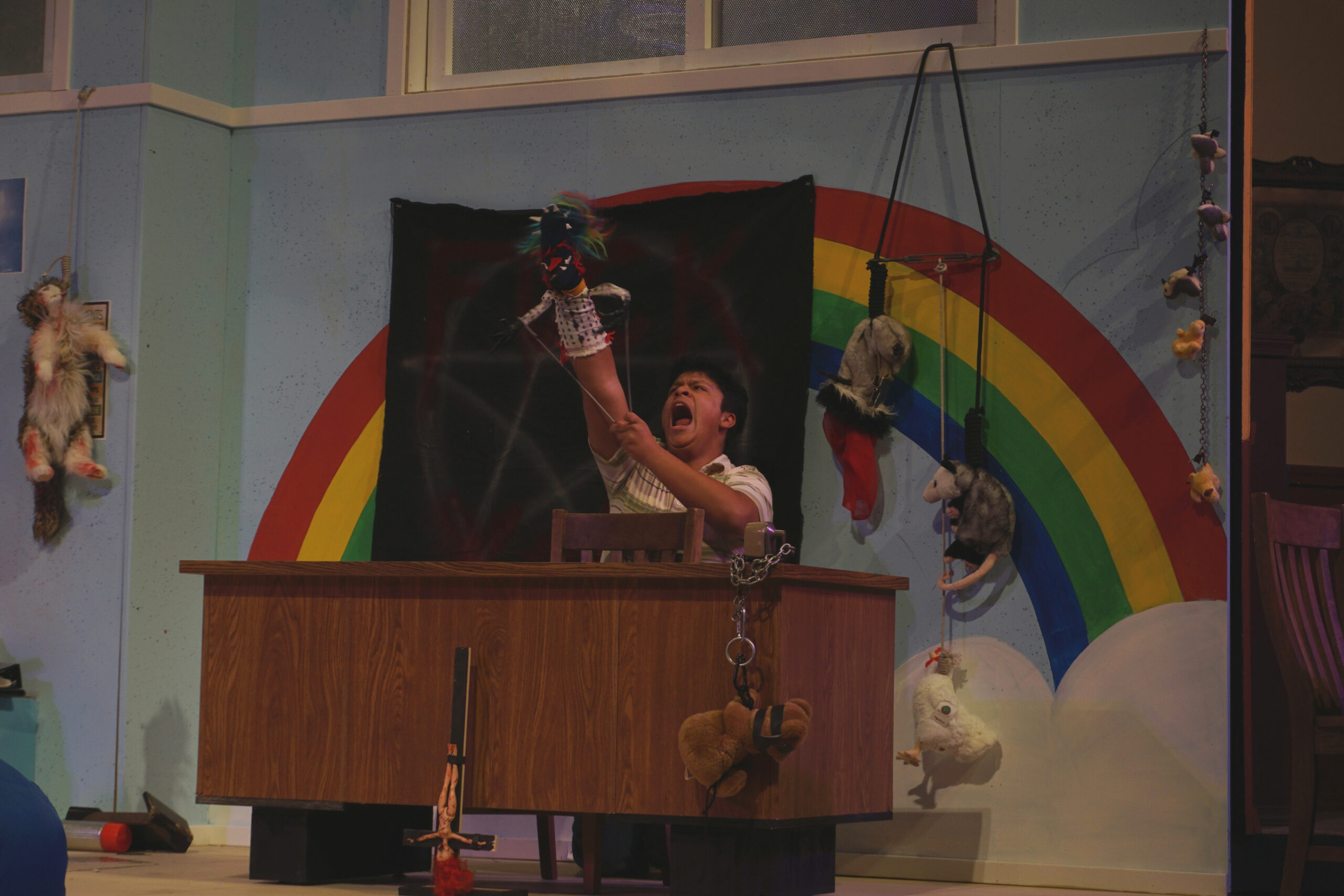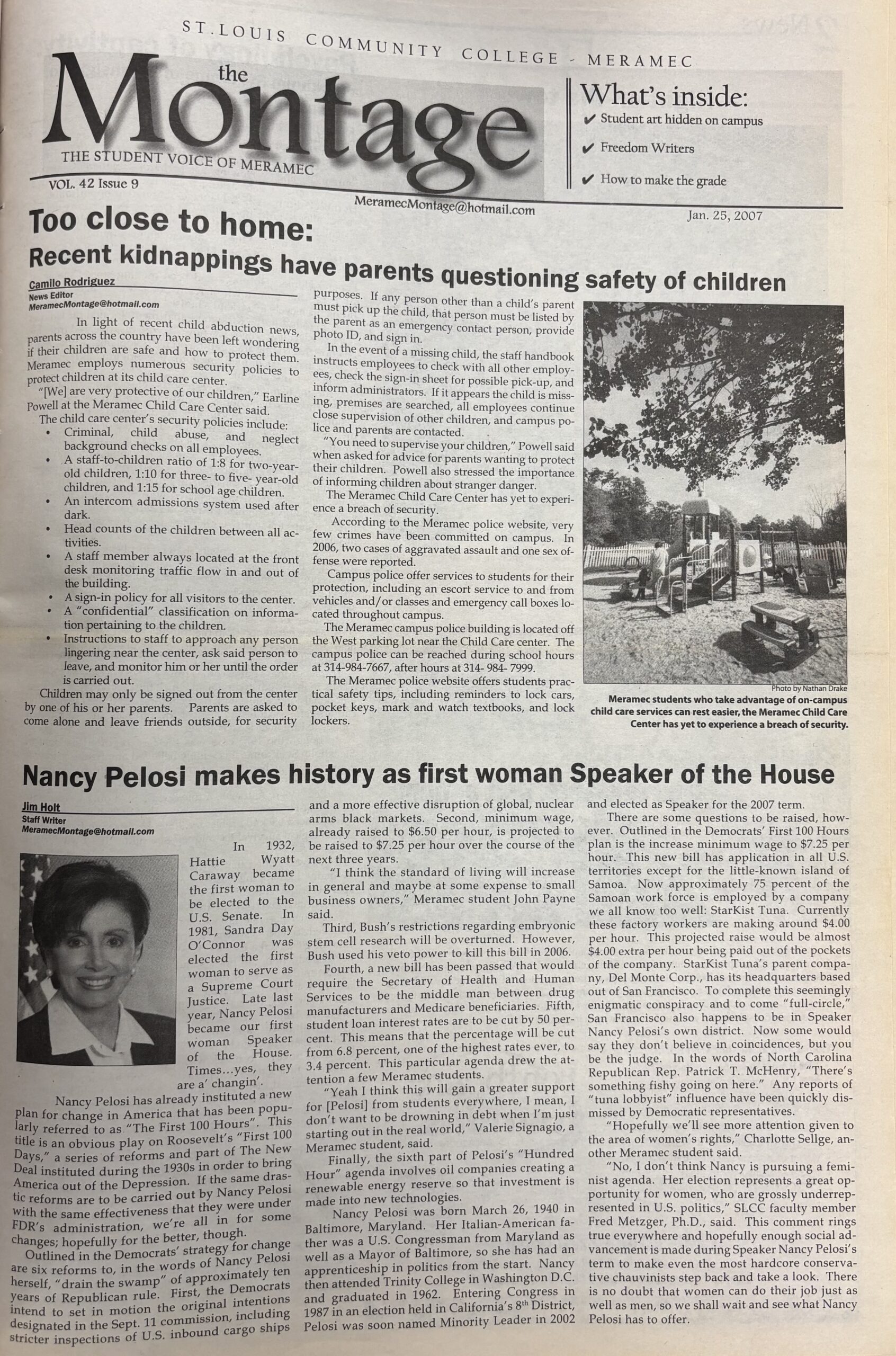Soliya students share experiences with visitors
By: Kavahn Mansouri
-Editor in Chief-

On April 11, in the Library Confluence room the International Visitor Leadership Program (IPVL) visited with the students of the Meramec branch of the Soliya Connect program.
The Connect program is a way for students all around the world to have discussions about current international issues. Students discuss topics in chat rooms in an effort to learn about one another’s cultures.
Five visitors from the program spoke in a discussion reflecting on how the Soliya program works and how it can benefit students.
Argentinian Alejandro Emanuel Belmonte; Executive Director of Our Mendoza Foundation, Armenian Izabella Abgaryan; Blogger and Civil Activist, Belarus native Alexey Leonchik; Project Manager, United Nations Development Program, Palestinian Jenny Baboun; Translator with Independent Ma’an News Agency’s English desk and Fungal James Tichawangana; Founder and Senior Web Imagineer at Aripano Inirnity heard firsthand experiences from Meramec students who have previously and are currently participating in the program.
Students Ellen dePasquale, Deborah Caby, Kaitlin Hayes, Peter Kahn and Elizabeth Grant shared their Soliya connect experiences.
Meramec English professor Angela Hamilton brought Soliya Connect to the campus in Oct. 2012. Meramec is the only institution in Missouri to take part in the program. She said the students who spoke are the best representation of what Soliya Connect can do for students.
“All of the students who are here have or are participating in the Soliya Connect program,” Hamilton said.
Soliya Connect Manager Nahid Ahmed gave a brief overview of the program for the visiting internationals.
“We’ve worked with over 4,000 students in 30 countries, more than a hundred institutions,” Ahmed said. “We work actively to develop twentieth century skills such as critical thinking, multi-cultural communication and media literacy.”
Ahmed said the program gives students an opportunity to grow in an international sense.
“One of the things we’ve found was that new media provide a lot of opportunities for communication and exposure,” Ahmed said. “The goal of the Soliya program is to creature structure for constructive dialogue.”
dePasquale said Soliya helps break down stereotypes and barriers through discussion.
“This has been one of the most wonderful experiences for me. Mainly because I get to meet people that I would never otherwise have the opportunity to meet,” dePasquale said. “We do spend a lot of time, especially in the beginning, not seeing others as they’ve maybe been represented because of the country they’re from.”
Caby said her view on the Israeli/Pakistani conflict has changed through conversations with other students.
“I found that I was changing my mind at some points,” Caby said. “I can see both sides now; I can understand both sides now. As we get to know people through the Soliya program we come to a sort of understanding. We can see each other as friends. We can see each other as people we can learn from. We don’t see enemies anymore.”
Caby added that common ground is a major theme in the Soliya Connect program.
“No matter what country you live in, no matter what culture you come from, we’re all human beings,” Caby said. “We will find common ground if we dig and we work hard. We need to work a little bit harder – on all sides.”
Grant said the program can benefit every student that gets involved.
“It’s been fascinating, it’s been a really good experience,” Grant said. “It’s been a really positive experience I think for everyone.”











